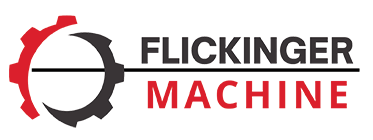Post Tensioning Jack Grippers For Sale
Inside a Post-Tensioning Jack, Grippers Grab and Secure the Strand
During post-tensioning operations, dozens of components are working together to ensure proper strand tensioning. Most of these go completely unnoticed but are nonetheless vital to the job. One such component is the jack’s grippers.
Specifically, grippers are responsible for grabbing onto the strand so that it can be pulled by the jack. This is one of the initial steps of the process, so reliable gripping is essential for tensioning reliability and efficiency.
No products were found matching your selection.
Grippers are Built With Durability and Strand Compatibility in Mind
Grippers are a simple piece of engineering, so you don’t need to check off a long list when selecting one. The primary thing to look for is durability. Grippers, like other types of wedges, make constant contact with the strand during tensioning. They must be capable of withstanding this repeated wear, so look for grippers built by reputable manufacturers. All gripper wedges are made from steel, and many are manufactured from alloy steel grades that offer better tension resistances and, therefore, better durability during tensioning operations.
In addition to durability, grippers come in a few designs, depending on the type of strand they are intended for use with. This includes grippers built for 3/8”, 7/16”, 1/2” and .6 strand.
Where Do the Grippers Sit Inside a Post-Tensioning Jack?
Grippers sit inside a gripper block that’s built along the bottom side of most tensioning jacks. Because of this placement, the tensioning jack must be aligned over the cable, and there must be enough cable to thread into the grippers. In this instance, “enough” cable means several inches’ worth.
However, it’s common for post-tensioning crews to encounter a strand that’s too short to access with a standard post-tensioning jack – meaning the grippers can’t reach the cable. The alternative is a short cable jack, which has its grippers built in the front.
What’s the benefit of this gripper placement? While a standard post-tension jack is aligned over the top of the strand, a short cable jack threads the strand through the nosepiece and body. Less clearance is needed to operate the jack, so it doesn’t require tails that are several inches long. In most cases, two or three inches of strand is all that’s needed for the grippers inside a short cable jack to function.
What’s the Difference Between Grippers and Other Types of Wedges?
Grippers look and function identically to wedges that are seated into anchors. They come with a multi-segment design like other wedges, and they penetrate the strand the same way. The only difference is, grippers are released from the cable following tensioning, while standard tensioning wedges are seated into the anchor permanently.
What Other Stressing Accessories are Necessary for Post-Tensioning Applications?
Grippers are held in place by a couple of other components. The gripper block secures the grippers inside the jack and ensures the grippers are properly aligned during tensioning. Retainer plates inside the jack brace the gripper block inside the jack – this ensures the grippers and related components operate reliably and safely.
Both the gripper block and retainer plates must also be manufactured from high quality, corrosion-resistant steel to guarantee this reliability.
On the back of the gripper assembly is the gripper handle. This protrudes from the bottom and back of the jack. Like with the grippers, gripper block and retainer plates, the gripper handle should be built for durability and long-term reliability.
As you can see, durability is paramount for the jack’s gripper components. These components do much of the interfacing and controlling during force application, so a weak spot here can cause potentially hazardous failures. Given this, post-tensioning crews usually opt for jacks and grippers built by reputable manufacturers.
The Flickinger Machine Team Can Help With Grippers
In a post-tensioning jack, the grippers, gripper retainer plates and gripper handle can all be removed and replaced without too much trouble. That is, if you have the expertise needed to properly remove and service the components.
The Flickinger Machine team has extensive expertise in every part inside a post-tensioning jack. That includes the grippers, gripper block, gripper handle and retainer plates inside every jack. If your post-tensioning equipment is having trouble grabbing onto strand and maintaining its position during tensioning, it could be a problem with the jack’s grippers. Our team can inspect your equipment, troubleshoot the problem and, if necessary, switch out the grippers or any part of the gripper assembly to restore the jack’s function.
